Python and Urban Agriculture: Vertical Farming
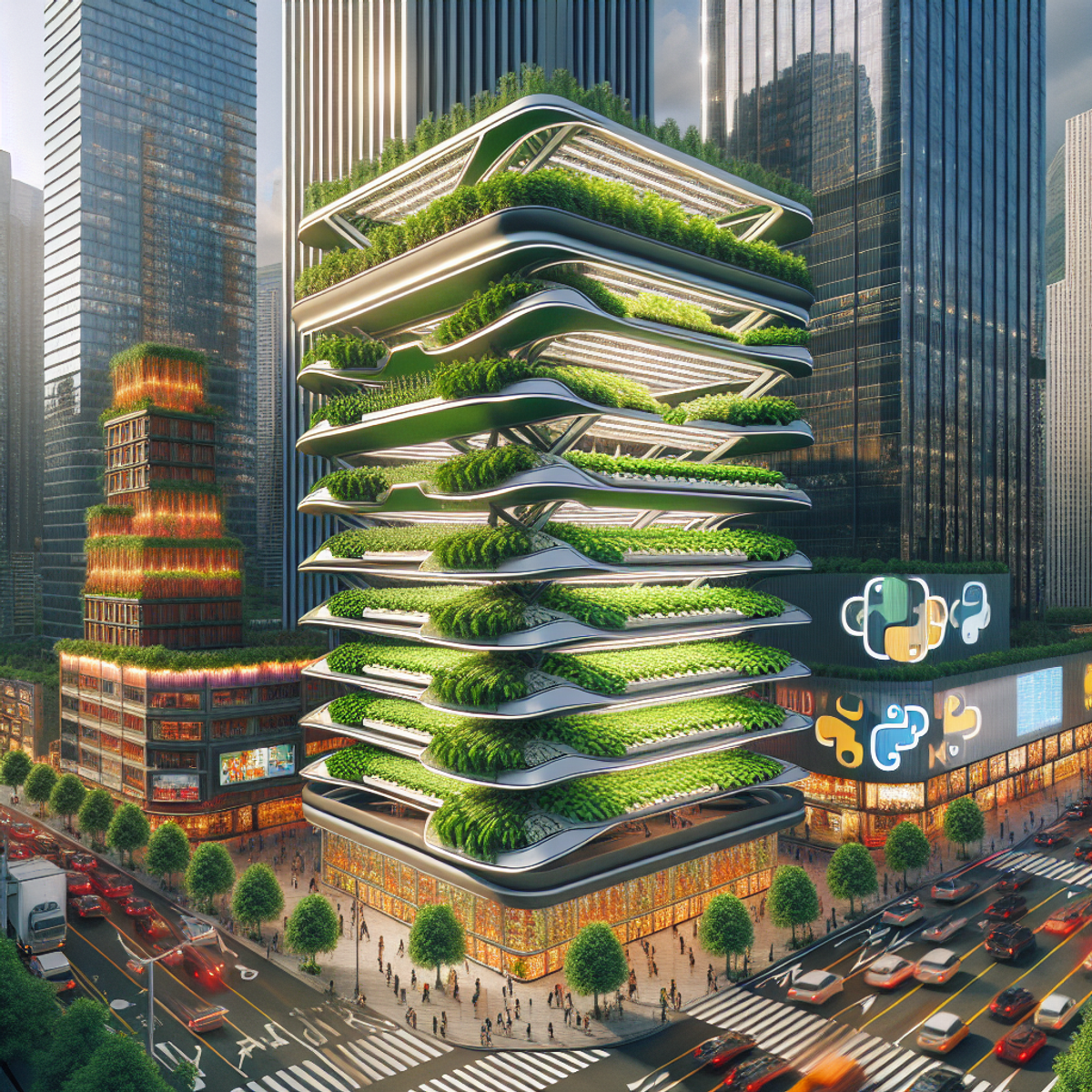
Python and Urban Agriculture: Vertical Farming
Introduction
Vertical farming, a method of urban agriculture that involves growing crops in vertically stacked layers, has gained significant attention in recent years. This innovative approach to food production offers a promising solution to the challenges of traditional agriculture in urban areas. By utilizing advanced technology, particularly Python, vertical farming systems can be optimized for maximum efficiency and productivity.
Vertical farming is driven by the need to address the increasing demand for food in densely populated cities while minimizing the ecological footprint of agriculture. This method allows for the cultivation of crops in controlled environments, such as indoor facilities or greenhouses, where factors like light, temperature, water, and CO2 can be precisely regulated. By stacking layers vertically, vertical farms maximize land utilization and significantly increase crop yield compared to conventional farming methods.
Advantages of Vertical Farming in Urban Areas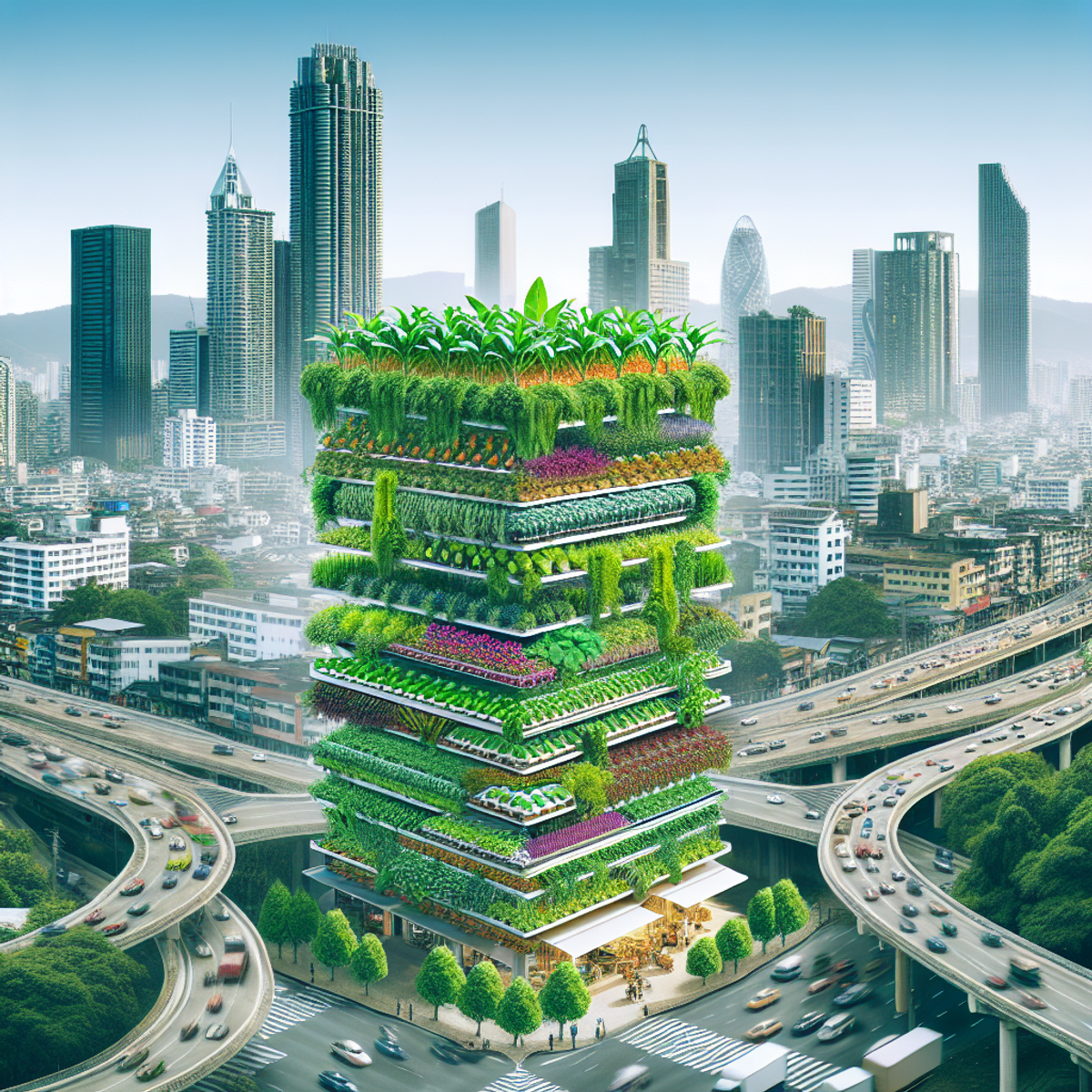
- It reduces the distance between farms and consumers, resulting in fresher produce with higher nutrient content.
- It minimizes transportation emissions associated with long-distance food distribution.
- It reduces the reliance on arable land and pesticides.
- It enhances food security by ensuring a consistent supply of fresh produce throughout the year.
Technology plays a crucial role in optimizing vertical farming systems, and Python has emerged as a powerful tool in this context. Python is a versatile programming language known for its simplicity and readability. Its wide range of libraries and frameworks make it ideal for developing automation systems and data analysis tools tailored specifically for vertical farming.
Python enables precise control over critical parameters within vertical farms, such as lighting and temperature. Through automation, Python-based systems can adjust these parameters based on crop requirements, resulting in improved plant growth rates and overall productivity. Additionally, Python facilitates data collection and analysis from various sensors within the farm environment, allowing farmers to fine-tune their operations and make data-driven decisions.
"Python's flexibility and extensive ecosystem make it an invaluable asset in optimizing vertical farming systems."
In conclusion, vertical farming represents a transformative approach to urban agriculture, addressing the challenges of land scarcity and increasing food demands. By implementing advanced technology, such as Python, vertical farms can achieve optimal growing conditions and significantly improve productivity. In the following sections, we will delve deeper into the key components of vertical farming systems and explore the role of Python in each aspect. From LED lights to automated irrigation and adaptable CEA systems, we will uncover how Python is revolutionizing the future of urban agriculture.
Understanding Vertical Farming and Its Advantages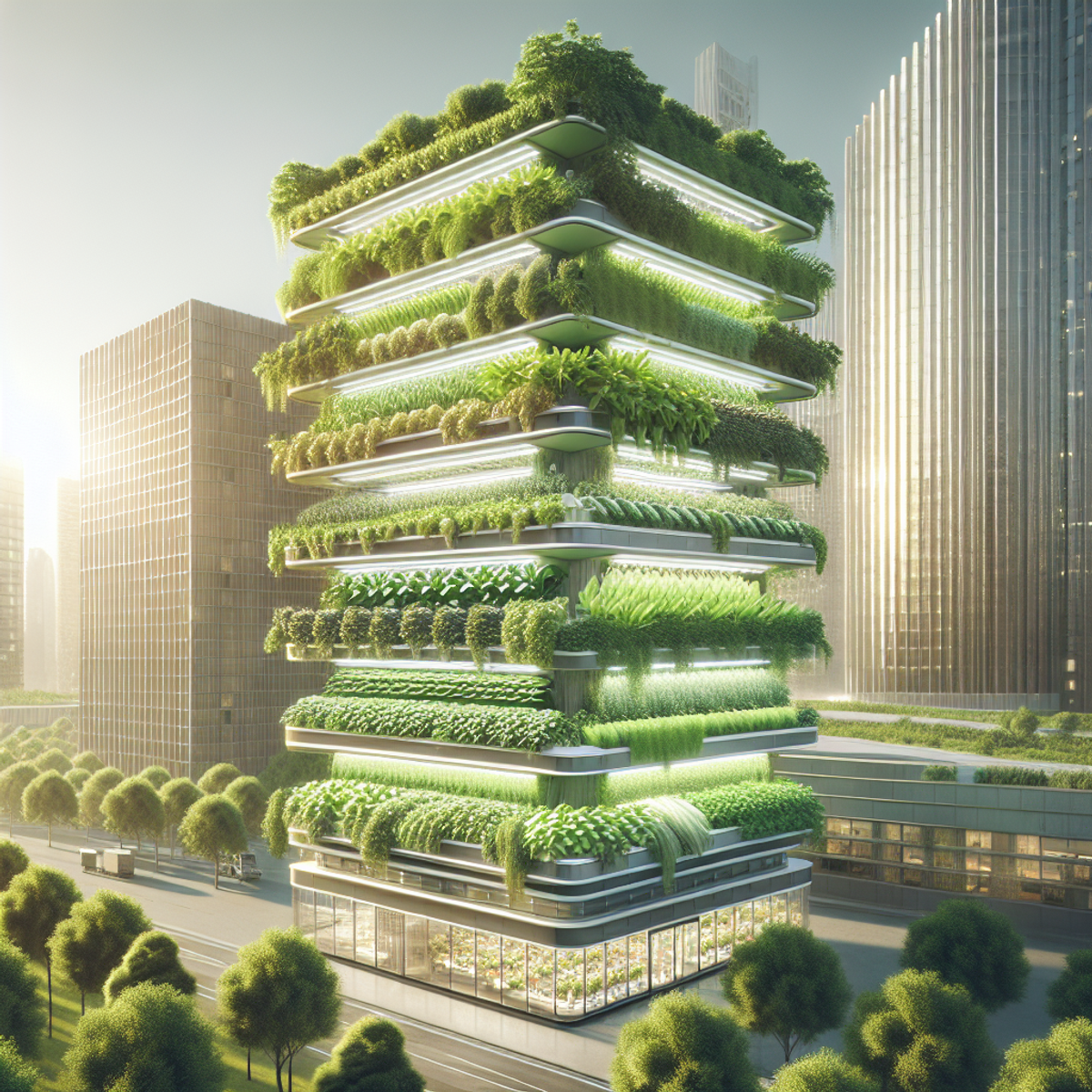
Vertical farming is a game-changing method of urban agriculture where crops are grown in stacked layers. It has numerous benefits and can help tackle food production challenges in cities.
What is Vertical Farming?
Vertical farming is a sustainable way of growing crops in vertically stacked layers, usually indoors. This method makes the most of available space and doesn't rely on traditional soil-based farming. It allows for the cultivation of various crops, including leafy greens, herbs, fruits, and vegetables.
Why is Vertical Farming Important in Urban Areas?
In cities where there's limited land for farming, vertical farming offers a practical solution for producing local food. By using vertical space effectively, this method significantly reduces the amount of land needed to grow crops. As a result, it becomes possible to set up farms in densely populated urban areas.
How Does Vertical Farming Differ from Traditional Agriculture?
Vertical farming stands apart from traditional agriculture in a few ways:
- Technology and Design: Instead of relying on large fields and open spaces, vertical farming takes advantage of advanced technology and intelligent design to maximize crop yield within a smaller area.
- Year-Round Production: Unlike traditional farms that are dependent on seasons and weather conditions, vertical farms can operate all year round thanks to their controlled environments.
- Compactness: Vertical farms have a smaller physical footprint compared to traditional farms as they utilize vertical space instead of spreading out horizontally.
Benefits of Using Stacked Layers in Vertical Farming
Implementing a stacked layer approach brings several advantages to vertical farming:
- Increased Production Capacity: By using multiple tiers or levels for growing crops, vertical farms can boost their output without needing more land. This allows them to meet higher demand while still making efficient use of space.
- Optimized Land Use: The stacked layer system maximizes land efficiency by growing crops vertically. It enables farmers to cultivate different types of plants simultaneously, making the most of available space.
- Flexibility: Vertical farming allows for easy customization of environmental conditions on each level, catering to the specific needs of different crops.
Why is Vertical Farming Resource-Efficient?
Vertical farming's resource efficiency plays a significant role in its sustainability:
- Water Conservation: Precision irrigation systems in vertical farms minimize water waste by delivering the right amount of water directly to plant roots. This targeted approach reduces water consumption compared to traditional irrigation methods.
- Energy Efficiency: Controlled indoor environments in vertical farms enable efficient use of energy for lighting and climate control. LED lights are often used to provide specific wavelengths needed for plant growth, resulting in less energy wastage.
- Reduced Environmental Impact: The proximity of vertical farms to urban centers helps reduce greenhouse gas emissions associated with long-distance transportation of food. It also cuts down on packaging waste generated during transportation.
Vertical farming offers an innovative solution to urban agriculture by using space-efficient designs and advanced technologies. Its unique benefits make it a promising answer to the increasing demand for locally grown food in cities.
Addressing Key Challenges in Urban Food Production
As urban populations continue to expand, the demand for locally sourced, fresh produce is on the rise. However, traditional agricultural practices face significant challenges in meeting this demand within urbanized settings. Let's explore the pressing need to overcome these challenges and how vertical farming addresses key issues related to land use and water consumption.
The Challenge of Land Availability
In urban areas, the availability of arable land for traditional agriculture is limited due to rapid urbanization and competing land uses. This scarcity of land poses a significant obstacle to establishing large-scale farms within city limits. As a result, food production struggles to keep pace with the growing population density.
Vertical farming presents a compelling solution to this challenge by enabling cultivation in vertically stacked layers within controlled environments. By utilizing unused vertical space, such as building interiors or repurposed structures, this innovative approach maximizes land efficiency without relying on expansive horizontal fields. As a result, vertical farms can be established in close proximity to urban centers, reducing the distance that produce needs to travel between farms and consumers.
Mitigating Water Scarcity Through Efficient Resource Management
Water scarcity is a critical concern in many urban areas, particularly in regions experiencing high population density and limited access to freshwater sources. Traditional agricultural methods rely heavily on extensive irrigation systems and are susceptible to water wastage and inefficiencies.
Vertical farming addresses the issue of water scarcity through advanced resource management practices. By implementing hydroponic or aeroponic systems, vertical farms optimize water usage by delivering nutrients directly to plant roots in a closed-loop recirculation system. This targeted approach minimizes water loss from evaporation and runoff while ensuring that plants receive precisely measured amounts of water and nutrients.
Additionally, some vertical farming facilities incorporate advanced water capture and filtration systems to recycle and reuse irrigation water. This sustainable practice not only reduces freshwater demand but also minimizes the environmental impact associated with conventional agricultural runoff.
In conclusion, vertical farming offers a promising solution for addressing key challenges in urban food production by maximizing land efficiency and implementing sustainable water management practices.
The Role of Technology in Optimizing Vertical Farming Systems
Vertical farming uses technology to create efficient and productive growing environments. One important part of this is Controlled Environment Agriculture (CEA), which is crucial for maintaining the best conditions for crop growth in vertical farms. CEA involves creating indoor growing spaces that are carefully controlled to make sure plants have the right amount of light, heat, water, and CO2 they need to grow. This method allows crops to be grown all year round, regardless of the weather outside, and ensures consistent and predictable harvests.
How Controlled Environment Agriculture (CEA) Works
- Lighting: LED lights are used to provide the right spectrum and intensity of light for each stage of plant growth.
- Temperature: Heating and cooling systems maintain optimal temperature ranges for different crops.
- Water: Irrigation systems deliver water directly to the plant roots, minimizing waste.
- CO2: Carbon dioxide supplementation enhances photosynthesis and promotes faster growth.
Benefits of Controlled Environment Agriculture (CEA) in Vertical Farming
- Year-round cultivation: Crops can be grown continuously without being affected by seasonal changes or extreme weather conditions.
- Higher yields: By providing ideal growing conditions, CEA can significantly increase crop productivity compared to traditional farming methods.
- Water conservation: Closed-loop irrigation systems in vertical farms recycle water, reducing overall consumption.
- Pest and disease control: The enclosed environment of vertical farms helps prevent infestations and minimize the use of pesticides.
- Land optimization: Vertical farming maximizes space utilization by stacking plants vertically, making it suitable for urban areas with limited land availability.
Python-Based Automation in Vertical Farming
Python programming language is used for automating tasks in vertical farms, particularly in controlling lighting and temperature settings. This automation allows farmers to make real-time adjustments based on specific crop requirements, ensuring that plants always have the best possible growing conditions. Here's how Python-based automation works in vertical farming:
- Sensors: Environmental sensors measure factors such as light levels, temperature, and humidity inside the farm.
- Actuators: These are devices that can adjust environmental parameters based on sensor readings. For example, turning lights on/off or adjusting fan speed.
- Data analysis: Python code analyzes sensor data to determine if any changes need to be made and sends commands to actuators accordingly.
Benefits of Python-Based Automation in Vertical Farming
- Precise control: Python allows for fine-tuning of lighting and temperature settings, ensuring that plants receive the exact conditions they need for optimal growth.
- Energy efficiency: By automating the operation of lights and HVAC systems, energy usage can be optimized, leading to lower electricity bills.
- Labor savings: Automated tasks reduce the need for manual intervention, freeing up time for farmers to focus on other important activities.
- Scalability: Python-based automation can easily be scaled up or down as per the size of the farm or changing cultivation requirements.
The Impact of Technology on Vertical Farming
The integration of Python-based automation in vertical farming systems leads to enhanced crop productivity and resource efficiency. By accurately managing environmental variables, such as light and temperature, Python contributes to maximizing photosynthesis rates and overall plant growth. This precision also minimizes energy consumption by ensuring that resources are utilized only when
Key Technological Components Driving the Success of Python-Powered Vertical Farms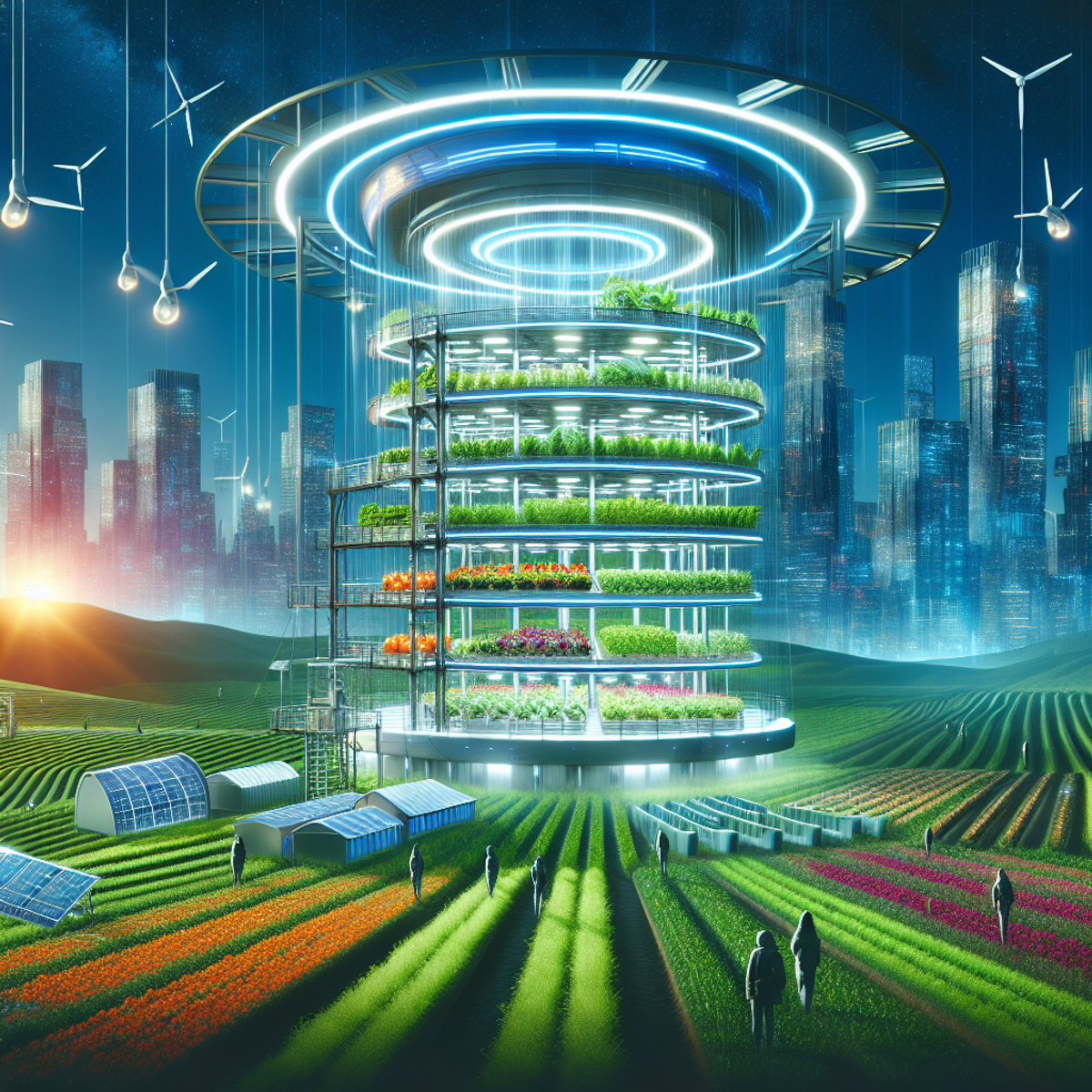
To make vertical farming systems more productive and efficient, there are several key technological components that are crucial. These components, when powered by Python-based automation, contribute to the success of vertical farms by providing precise control and management of vital factors such as lighting, nutrient delivery, and growth conditions.
LED Lights: Energy-Efficient Illumination for Photosynthesis
One of the main technological components driving the success of Python-powered vertical farms is the use of LED lights. These lights are essential in providing energy-efficient illumination for photosynthesis in the controlled environment of vertical farming.
LED lights have several advantages over traditional lighting methods such as fluorescent or incandescent bulbs:
- They emit specific wavelengths of light that can be customized to meet the needs of different plant species at various stages of growth.
- By using Python-based automation, growers can accurately control the intensity and duration of light exposure for optimal plant growth.
LED lights are highly efficient, converting a larger percentage of electrical energy into usable light for photosynthesis compared to other lighting options. This energy efficiency not only reduces electricity consumption but also minimizes heat generation, allowing for better temperature control within the vertical farm.
Hydroponics and Geoponics: Nutrient Delivery in the Absence of Soil
Another important technological component in Python-powered vertical farms is the use of hydroponic and geoponic systems for nutrient delivery without soil.
- Hydroponics: This is a method of growing plants without soil. Instead, they are grown in water-based solutions that contain all the necessary nutrients. The solution is constantly circulated through the system to ensure that plants receive an optimal balance of nutrients for healthy growth. With Python automation, growers can monitor and adjust nutrient levels based on plant requirements, ensuring precise control over the growing conditions.
- Geoponics: This combines soilless cultivation with the use of a growth medium like coco coir or perlite. These mediums provide support to the plants while allowing for efficient nutrient delivery. Python automation can be used to monitor and automate the watering and nutrient distribution process, ensuring that plants receive the right amount of nutrients at the right time.
By implementing hydroponic and geoponic systems in vertical farming, growers can maximize space utilization, reduce water consumption, and optimize nutrient delivery for enhanced crop productivity.
Advancements in Irrigation and Water Management through Python Automation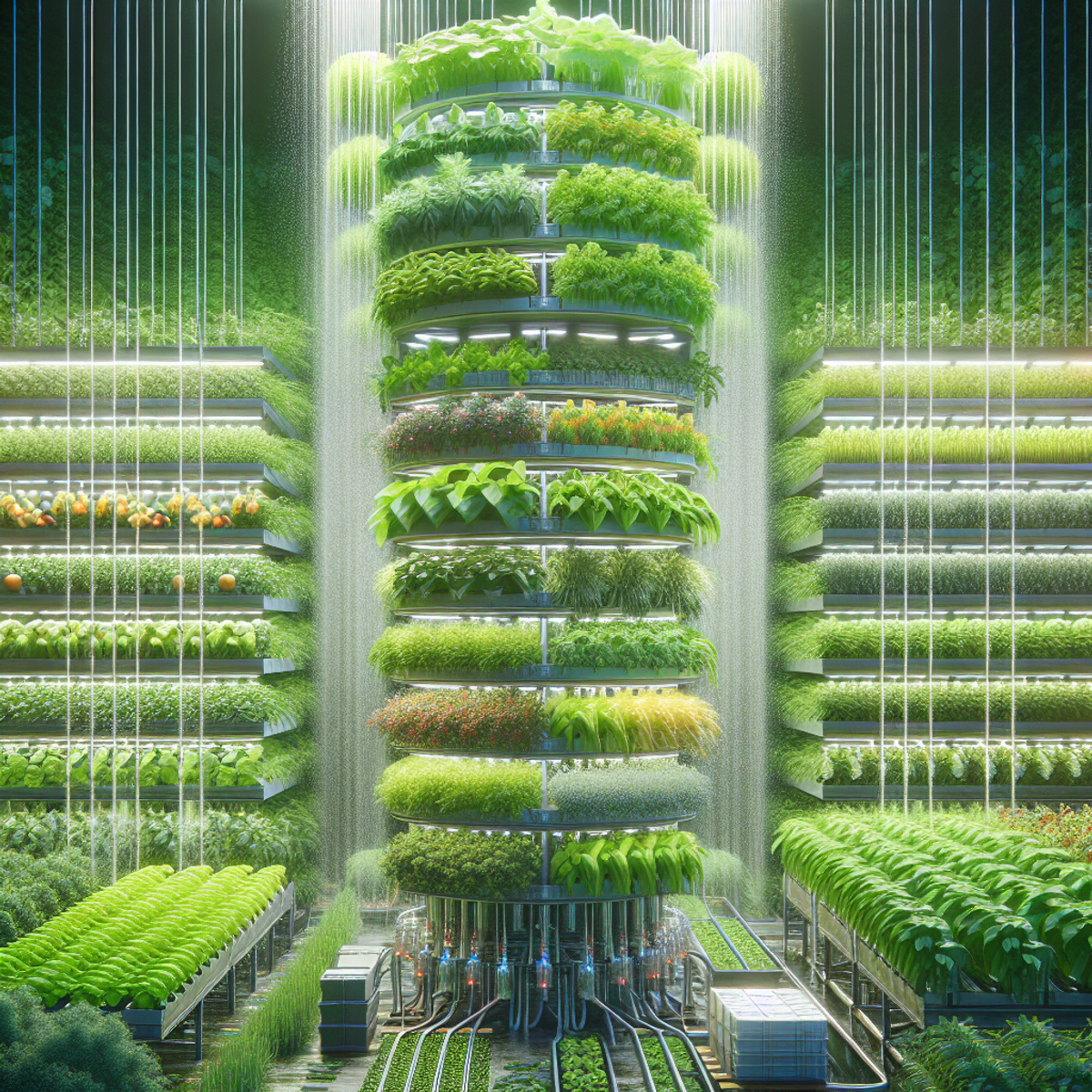
Efficient irrigation and water management are crucial for the successful growth of crops in vertical farming. With the help of Python automation, farmers can:
- Optimize water usage
- Ensure precise moisture levels
- Promote sustainable practices
This section will explore the importance of automated irrigation systems and the role of recycled water in vertical farming.
Importance of Automated Irrigation Systems
Automated irrigation systems play a vital role in maintaining optimal moisture levels within vertical farm setups. Here are some key points to consider:
- Precise control: Python-powered automation allows farmers to program irrigation systems to deliver water at specific intervals and quantities. This precision ensures that plants receive the right amount of moisture without overwatering or underwatering.
- Resource efficiency: With automated systems, water usage is optimized by minimizing wastage. By only supplying water when needed, these systems reduce the risk of runoff and evaporation, resulting in significant water savings.
- Labor-saving: Traditional manual watering methods can be time-consuming and labor-intensive. Automated irrigation systems free up valuable time for farmers, allowing them to focus on other essential tasks such as crop monitoring and maintenance.
- Smart Water Level Classification: Additionally, machine learning algorithms can be employed to classify water levels for smart irrigation systems. This enables precise control over water delivery based on real-time data, further optimizing resource usage.
The Role of Recycled Water
Water scarcity is a pressing issue in agriculture, especially in urban areas where freshwater resources are limited. Vertical farming addresses this challenge through the use of recycled water. Here's why recycled water plays a crucial role in promoting sustainability:
- Conservation: Recycled water reduces the demand for freshwater sources, helping to conserve this valuable resource. It provides an alternative to relying solely on freshwater supplies for irrigation purposes.
- Nutrient-rich: Recycled water often contains nutrients that can benefit plant growth. When properly treated and filtered, it can serve as a nutrient-rich solution for hydroponic or geoponic systems, further enhancing crop productivity.
- Waste reduction: Vertical farms have the advantage of capturing and recycling excess water from irrigation and hydroponic systems. This closed-loop system minimizes water waste and reduces the environmental impact associated with conventional farming practices.
By leveraging Python automation, vertical farms can maximize the potential of recycled water. Automated systems can monitor water quality, adjust nutrient levels, and ensure that crops receive the optimal amount of water for their growth stages.
Automated irrigation systems and the use of recycled water are significant advancements in vertical farming. By harnessing the power of Python automation, farmers can:
- Achieve precise control over moisture levels
- Conserve water resources
- Promote sustainable agricultural practices
The integration of these technologies enhances crop productivity while minimizing environmental impacts.
To drive further advancements in this field, funding opportunities such as the USDA's AFRI-FAS program could support research and development efforts, leading to more efficient and sustainable irrigation practices in vertical
Building Resilient and Adaptable Vertical Farming Systems with Python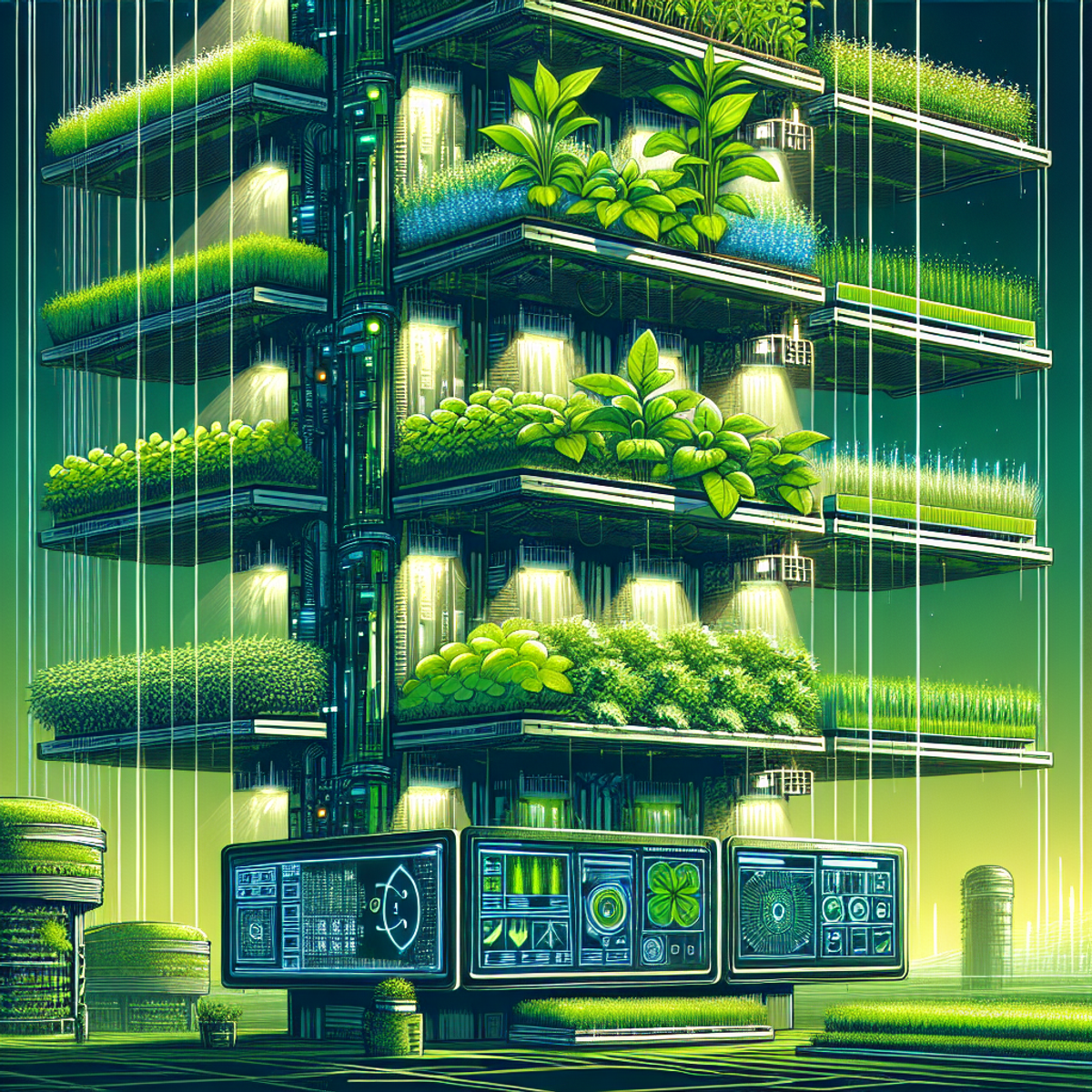
Vertical farming offers a unique opportunity to create strong and flexible agricultural systems that can meet the diverse needs of urban food production. By using Python to optimize these systems, we can develop advanced Controlled Environment Agriculture (CEA) solutions that can work well with different types of crops and growing methods.
Exploring Adaptable CEA Systems
Adaptable CEA systems are designed to offer flexibility in crop selection and growing methods, making them well-suited for the dynamic nature of urban agriculture. These systems use Python-based automation to create an environment that can be easily modified to support different crops, growth stages, and environmental conditions.
Flexibility in Crop Selection
- Adaptable CEA systems enable farmers to grow a wide range of crops, including leafy greens, herbs, fruits, and vegetables, within the same infrastructure. This flexibility allows for diversification of produce without significant changes to the overall farming setup.
- With Python-driven controls for lighting, irrigation, and nutrient delivery, vertical farms can seamlessly switch between different crops based on market demand or seasonal variations.
Accommodating Various Growing Techniques
- Python-powered vertical farming systems can support multiple growing techniques such as hydroponics, aeroponics, and aquaponics within the same facility. This versatility empowers farmers to experiment with different methods and optimize their production based on crop-specific requirements.
Embracing Crop Diversity
The adaptability of Python-driven CEA systems promotes crop diversity, which is crucial for enhancing food security and meeting the diverse nutritional needs of urban populations.
Nutritional Diversity
- By facilitating the growth of a wide variety of crops, vertical farms can contribute to dietary diversity in urban areas. This is particularly significant as it allows consumers access to fresh, locally grown produce that may not be readily available through traditional supply chains.
- Moreover, research studies like this one have shown that increased crop diversity in urban farming can lead to improved nutrition and health outcomes.
Sustainable Production
- Cultivating diverse crops within a single system supports sustainable agricultural practices by reducing the need for monoculture farming. This approach helps mitigate the risks associated with pest outbreaks and diseases while promoting ecological balance.
Resilience Through Adaptive Technology
Python automation plays a crucial role in creating resilient vertical farming systems that can adapt to changing environmental conditions and market demands.
Dynamic Environmental Control
- Advanced sensors and Python-based control algorithms enable real-time adjustments to lighting, temperature, humidity, and CO2 levels within the farm. This dynamic control ensures optimal growing conditions for different crops throughout their growth cycle.
- In fact, according to a study published in Sensors, these adaptive technologies significantly improve resource utilization efficiency in vertical farming.
Market-Driven Adaptations
- With Python-powered data analytics capabilities, vertical farms can respond to market trends and consumer preferences by adjusting their crop selections and production schedules. This agility allows farmers to align their output with demand fluctuations while minimizing waste.
The integration of Python in developing adaptable CEA systems represents a significant step towards
Challenges and Future Prospects for Python-Powered Vertical Farming
Vertical farming offers many benefits, but it also comes with its own set of challenges. It's important to consider both the limitations of this farming method and the potential future developments in Python programming and other technologies that could shape the field of urban agriculture.
Potential Challenges and Limitations
Here are some of the main challenges and limitations that may arise when implementing a Python-powered vertical farming system:
- High Initial Costs: Setting up a Python-powered vertical farm requires a significant investment in technology, infrastructure, and automation equipment. This upfront financial burden can be difficult for smaller-scale farms or new businesses to overcome.
- Technical Expertise: Running and maintaining Python-powered systems requires a certain level of technical knowledge and expertise. Not all farmers or organizations may have access to personnel with the skills needed to manage the software and hardware components effectively.
Insights into the Future of Urban Agriculture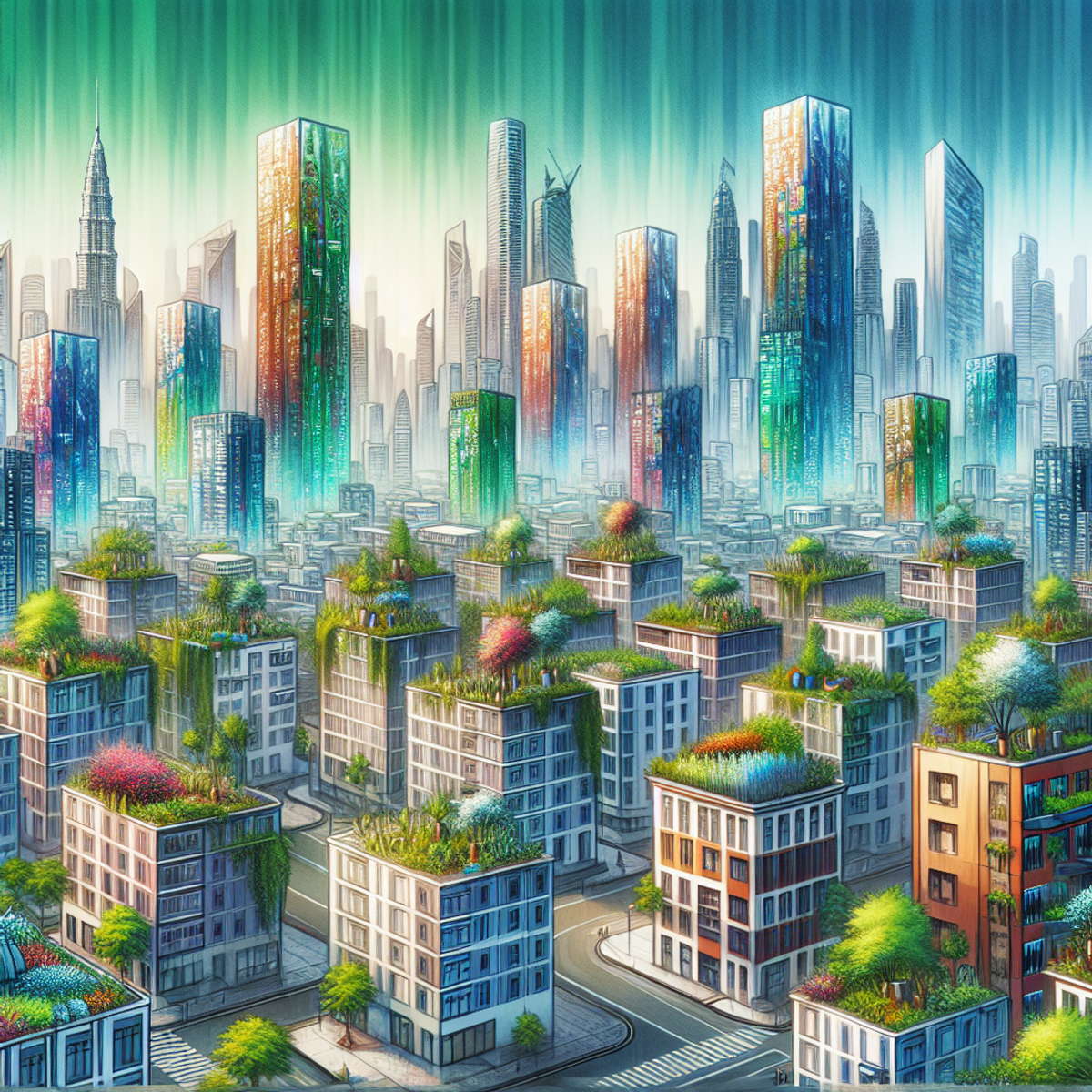
As we look ahead, there are several key trends and possibilities that could shape the future of urban agriculture:
- Advancements in Python Programming: Ongoing improvements in Python programming are likely to result in more user-friendly interfaces and integrated solutions specifically designed for vertical farming. This could potentially make it easier for farmers with limited technical backgrounds to adopt these technologies.
- Integration of Emerging Technologies: Combining Python with other emerging technologies like artificial intelligence (AI), machine learning, and the Internet of Things (IoT) opens up exciting opportunities for making vertical farming systems more efficient, precise, and adaptable. By using these advanced tools, farmers can better manage resources, monitor crops, and make informed decisions.
"The synergy between Python programming and cutting-edge technologies is poised to revolutionize the landscape of urban agriculture, paving the way for more sustainable and resilient food production methods."
In conclusion, while there are challenges associated with implementing Python-powered vertical farming systems, the future looks promising. Ongoing developments in programming and the integration of new technologies have the potential to overcome these limitations and bring about significant improvements in urban agriculture.
Conclusion
Encourage readers to explore the potential of Python in driving innovation in their own vertical farming projects or research endeavors, emphasizing the importance of sustainable practices for the future of urban agriculture.
As you have learned throughout this article, vertical farming presents an innovative and promising approach to urban agriculture, addressing critical food production challenges while minimizing environmental impact. The integration of Python technology has significantly enhanced the efficiency and sustainability of vertical farming systems, paving the way for future advancements in urban food production.
FAQs (Frequently Asked Questions)
What is the role of technology, specifically Python, in optimizing vertical farming systems?
Technology, particularly Python, plays a crucial role in optimizing vertical farming systems by enabling precise control of lighting and temperature parameters for enhanced crop productivity through automation.
What are the advantages of implementing a stacked layer approach in cultivating crops vertically?
Implementing a stacked layer approach in cultivating crops vertically offers advantages such as efficient space utilization, increased crop yield, and the ability to grow a variety of crops in a limited area.
How does vertical farming mitigate the issue of water scarcity in urban areas?
Vertical farming mitigates the issue of water scarcity through efficient resource management, such as the use of automated irrigation systems and recycled water, to ensure precise moisture levels within the farm setups.
What is the significance of Controlled Environment Agriculture (CEA) in maintaining optimal growing conditions within vertical farms?
Controlled Environment Agriculture (CEA) is significant in maintaining optimal growing conditions within vertical farms by providing a controlled environment for indoor growth and enabling precise control of factors such as light and temperature.
What are the key components driving the success of Python-powered vertical farms?
Key components driving the success of Python-powered vertical farms include LED lights for energy-efficient illumination, hydroponic and geoponic systems for nutrient delivery, and the use of Python-based automation for precise control of growing conditions.
How does automated irrigation contribute to ensuring precise moisture levels within vertical farm setups?
Automated irrigation contributes to ensuring precise moisture levels within vertical farm setups by providing accurate and timely watering to the crops, promoting optimal growth and reducing water wastage.
What are adaptable CEA systems and how do they contribute to resilient vertical farming?
Adaptable CEA systems can accommodate a wide range of crop types and growing techniques, contributing to resilient vertical farming by offering flexibility and enabling crop diversity within a single system.
What are potential challenges associated with the use of Python and technology in vertical farming?
Potential challenges associated with the use of Python and technology in vertical farming include high initial costs for implementation and the need for technical expertise to effectively utilize and maintain the systems.
How can Python drive innovation in vertical farming projects or research endeavors?
Python can drive innovation in vertical farming projects or research endeavors by enabling advanced automation, precise control over growing conditions, and sustainable practices that are crucial for the future of urban agriculture.


Comments
Post a Comment